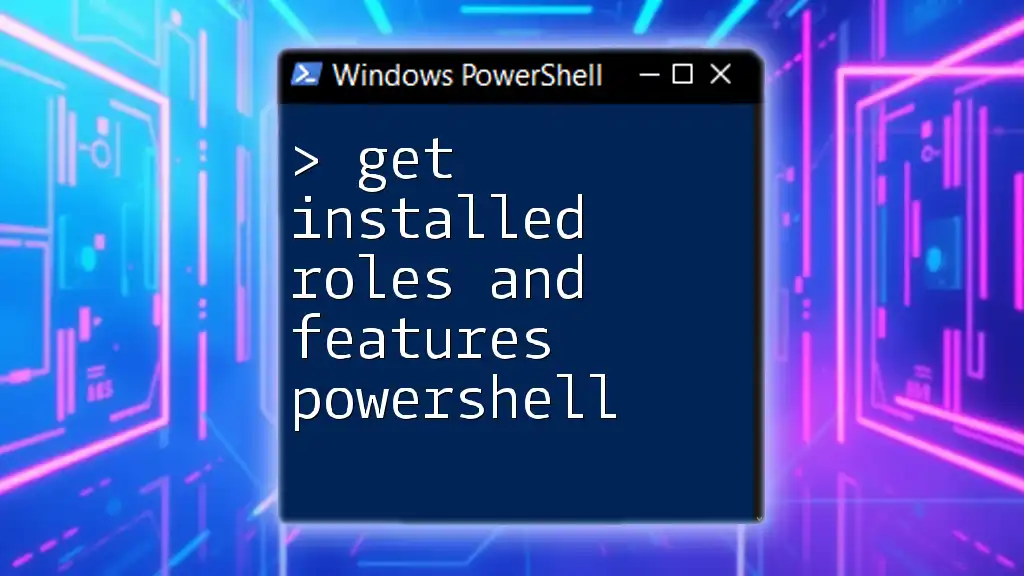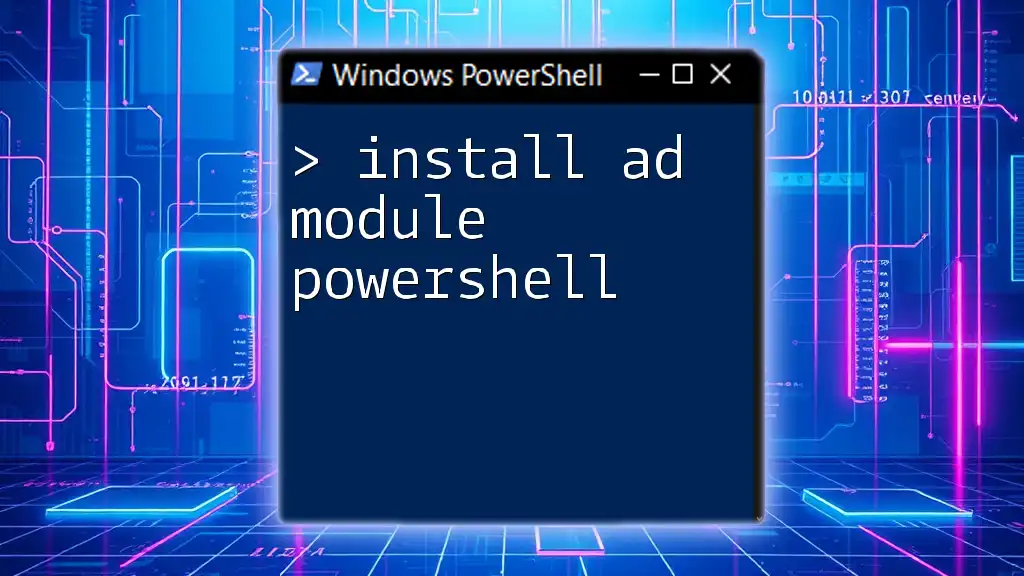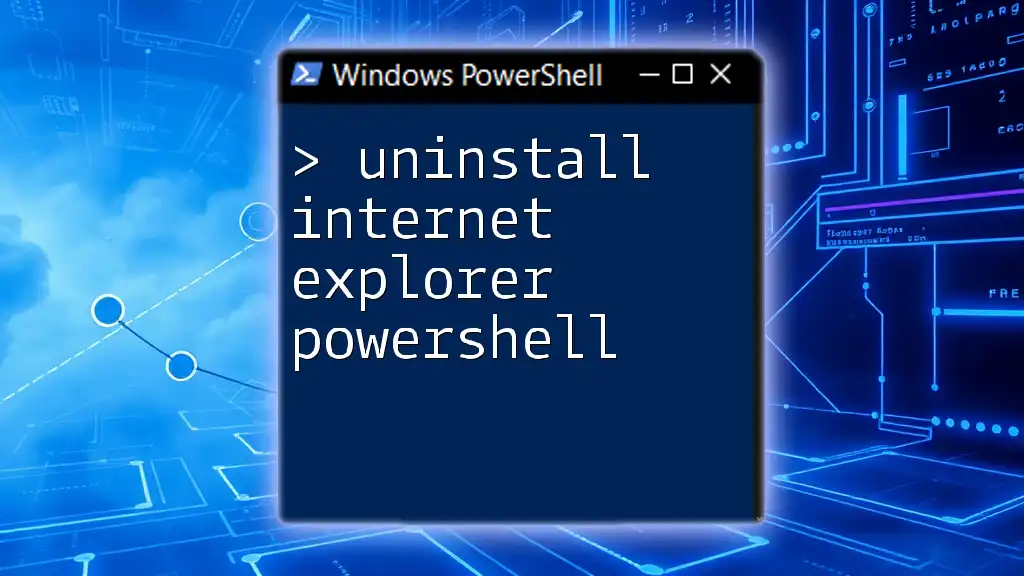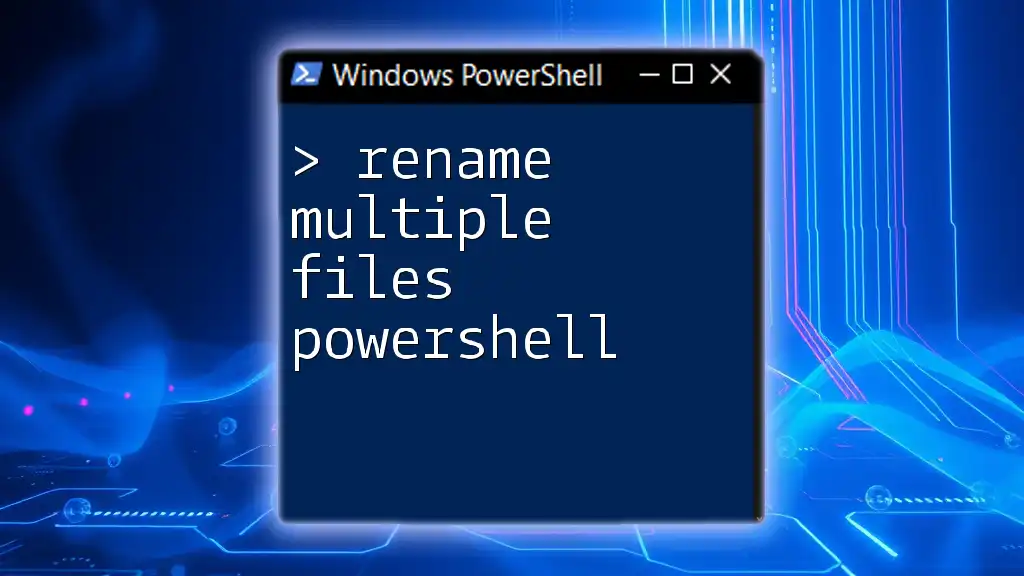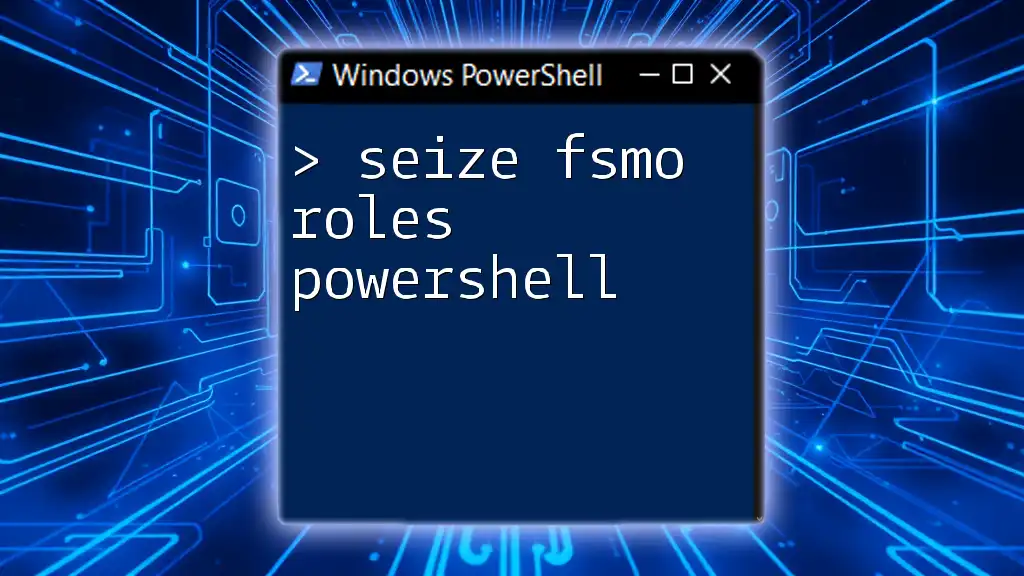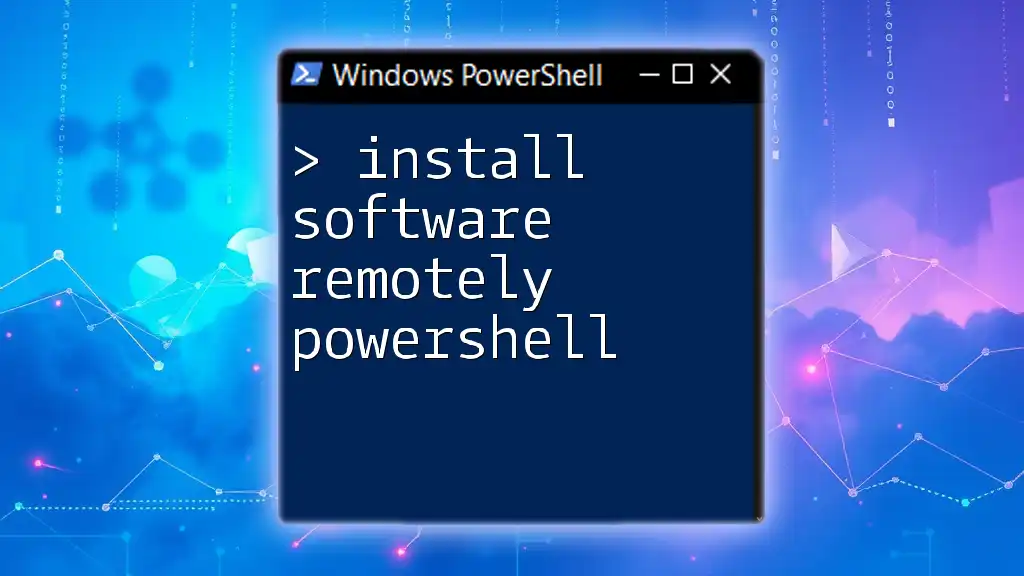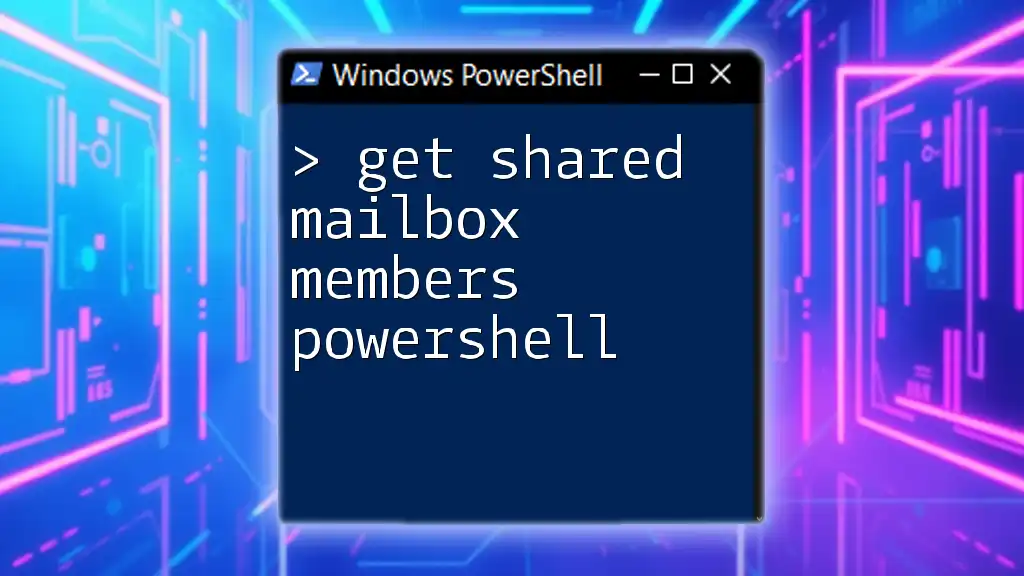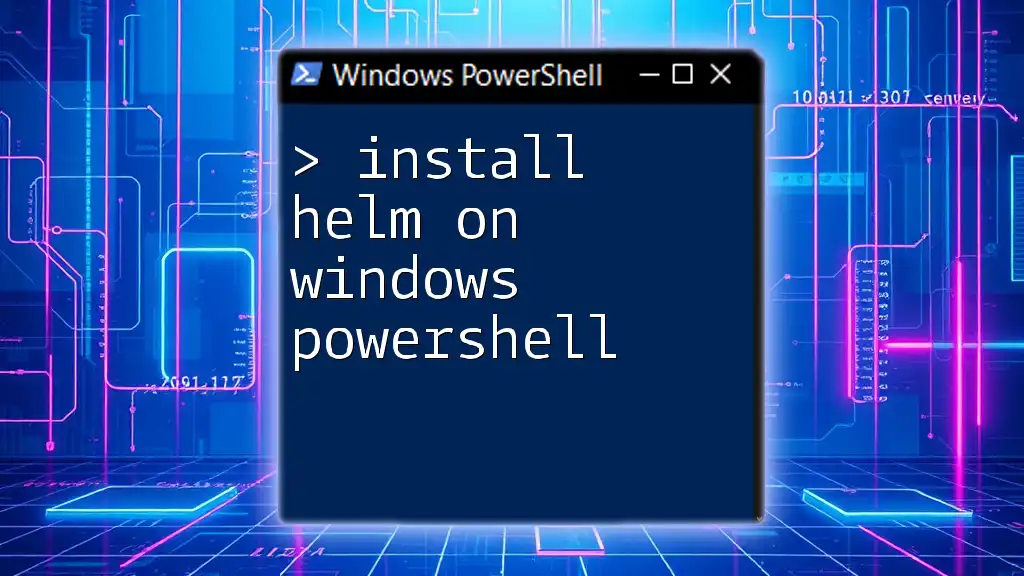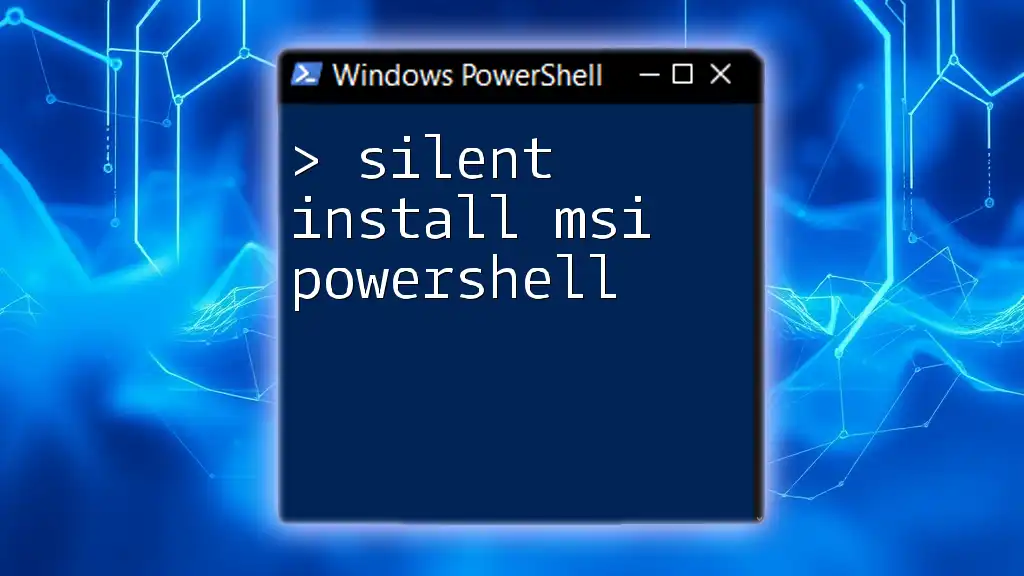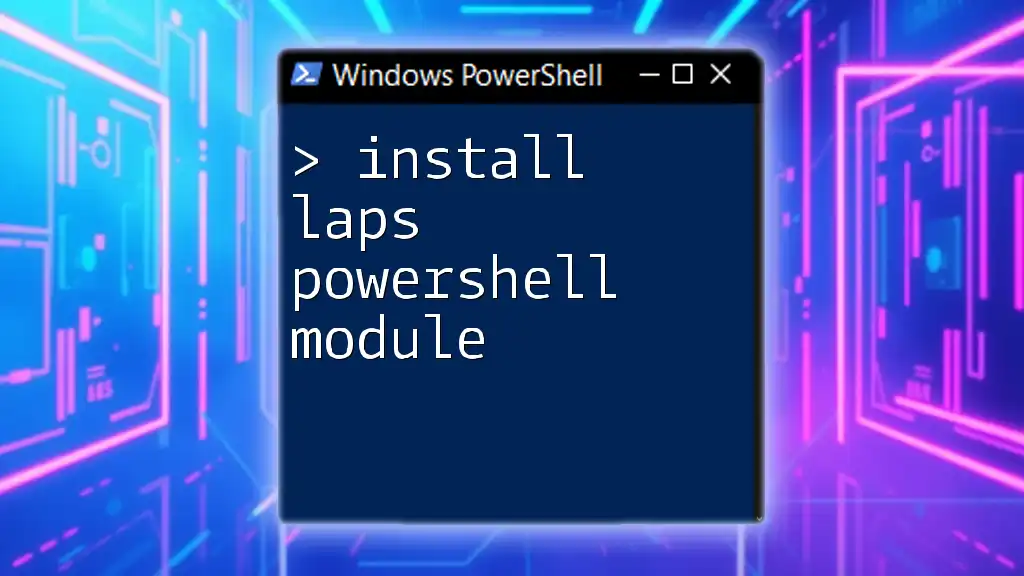The `Get-WindowsFeature` cmdlet in PowerShell allows you to retrieve a list of all installed roles and features on a Windows server, providing insights for system management and configuration.
Get-WindowsFeature | Where-Object { $_.Installed -eq $true }
Understanding Roles and Features
What Are Roles?
In the context of Windows Server, roles are specific functionalities that can be installed on a server to fulfill a specific job. For instance, the Web Server (IIS) role allows the server to host websites, while the Active Directory Domain Services role provides directory services needed for domain management.
What Are Features?
Features, on the other hand, are additional capabilities or functionalities that enhance the server's performance or provide necessary functions. For example, Hyper-V is a feature that allows for virtualization, enabling you to run multiple operating systems on one physical machine.
Difference Between Roles and Features
Understanding the difference between roles and features is crucial for effective server management. Roles are essential for defining the primary tasks of a server, while features serve as enhancements that provide supplementary functions. The correct management of both ensures optimal server performance and functionality.
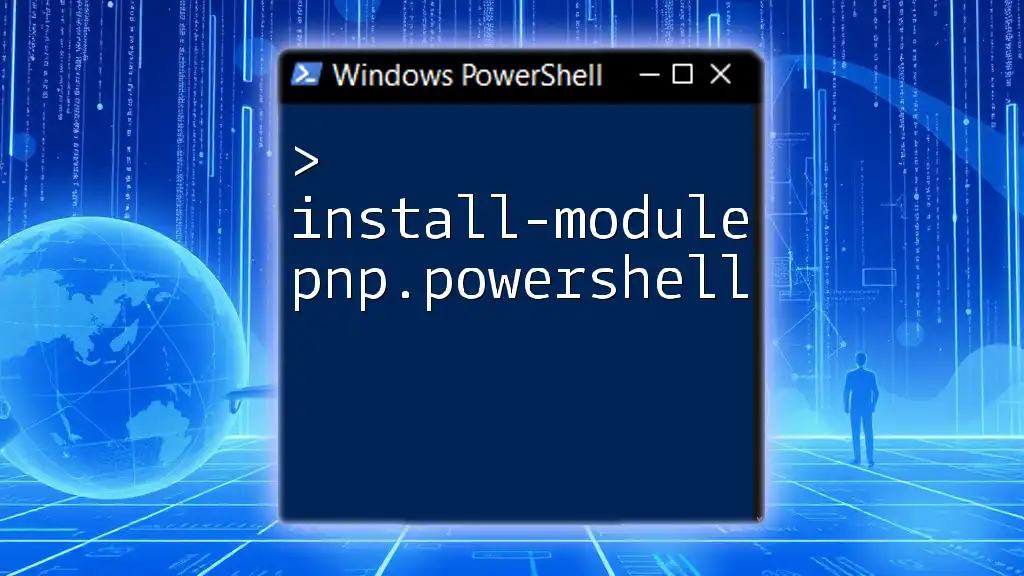
Getting Started with PowerShell
What is PowerShell?
PowerShell is a task automation framework that includes a command-line shell and associated scripting language. It offers system administrators powerful tools and commands for managing Windows systems, making it an essential skill for anyone involved in IT management.
Opening PowerShell
To get started, you'll need to open PowerShell. Here are the steps for different Windows versions:
- On Windows 10 or later, you can search for “PowerShell” in the Start menu. Right-click and select Run as administrator to access full capabilities.
- On Windows Server, type in PowerShell in the search bar and select it, ensuring to run it with administrative privileges.
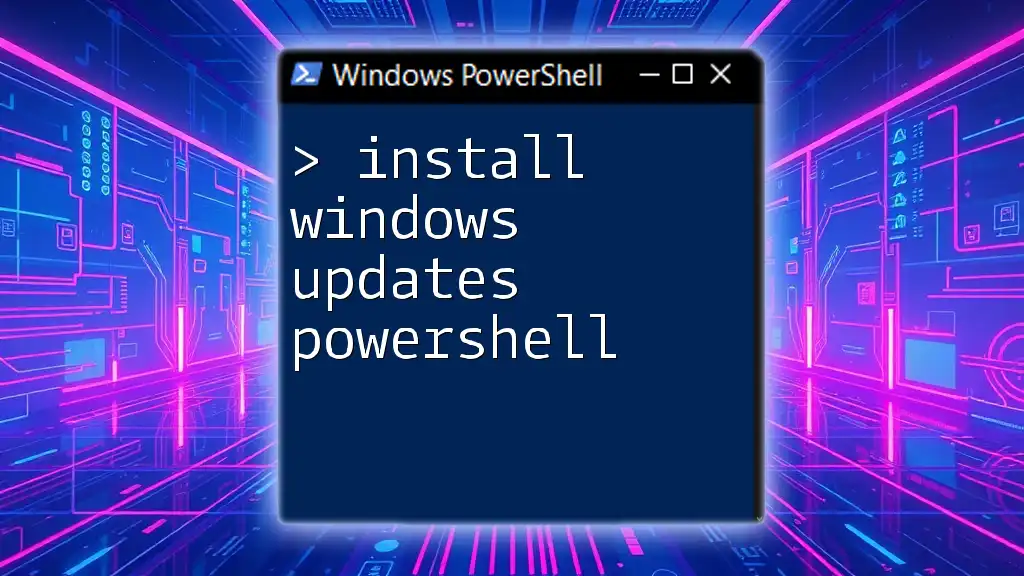
Using PowerShell to Get Installed Roles and Features
The `Get-WindowsFeature` Cmdlet
To get installed roles and features, you use the `Get-WindowsFeature` cmdlet. This command is the backbone of querying roles and abilities present on your server.
Basic Syntax
Here’s the basic command to retrieve all installed roles and features:
Get-WindowsFeature
When executed, this command lists all features and roles, along with their installation status. The output includes columns that display the feature name and its installation state, typically showing if it’s installed, available, or removed.
Filtering Results
Using the `-Name` Parameter
Sometimes, you may want to focus on a specific role or feature. You can use the `-Name` parameter with wildcards to filter results. Here’s how you can check for features related to IIS:
Get-WindowsFeature -Name *Web*
This command returns only those features whose names include "Web", helping you narrow your focus to relevant items.
Using the `-IncludeAllSubFeature` Parameter
To get not just the main features but all associated sub-features, you can utilize the `-IncludeAllSubFeature` parameter:
Get-WindowsFeature -IncludeAllSubFeature
By doing this, you ensure a comprehensive output, including every sub-feature beneath the main capabilities.
Checking Installation Status
When using `Get-WindowsFeature`, you’ll notice features displayed alongside their installation statuses, such as Installed, Available, and Removed. It’s essential to understand these statuses for effective server management.
Example of Checking Specific Feature Status
To check the installation status of a specific feature, you could run:
Get-WindowsFeature -Name Web-Server
The output clearly indicates whether the Web Server role is installed or not, allowing for quick checks in your server management tasks.
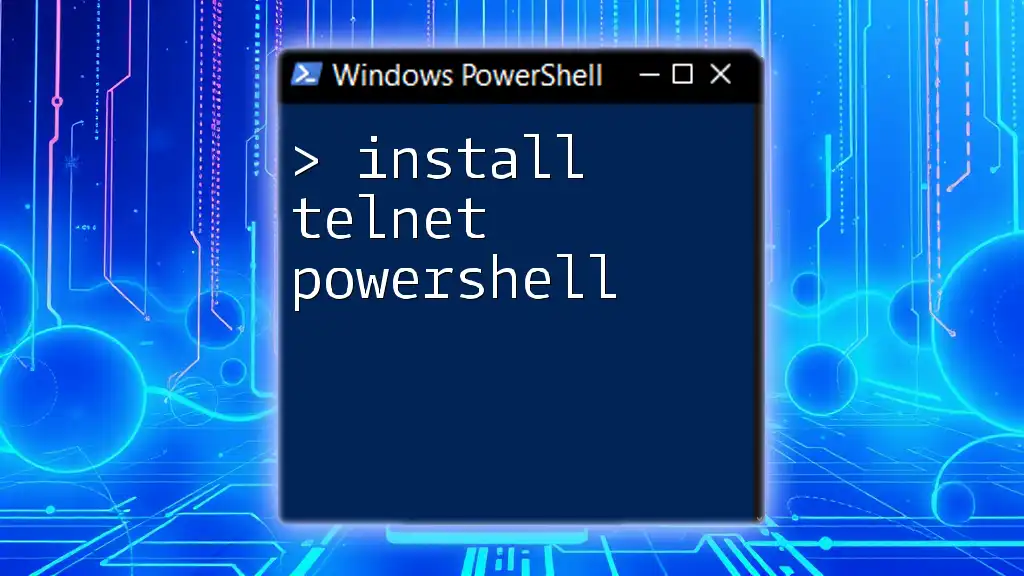
Output Formatting
Formatting Output with `Select-Object`
If you want to refine the output for clarity, you can pipe the results into `Select-Object` to display only specific details:
Get-WindowsFeature | Select-Object DisplayName, InstallState
This command modifies the displayed columns, providing a cleaner view that emphasizes the names and installation states of roles and features.
Exporting Data to CSV
For documentation or reporting purposes, you may want to export the list of installed features to a CSV file. This can be accomplished easily:
Get-WindowsFeature | Export-Csv -Path "InstalledFeatures.csv"
Using this command allows you to save the output in a structured format, facilitating further analysis or reporting.
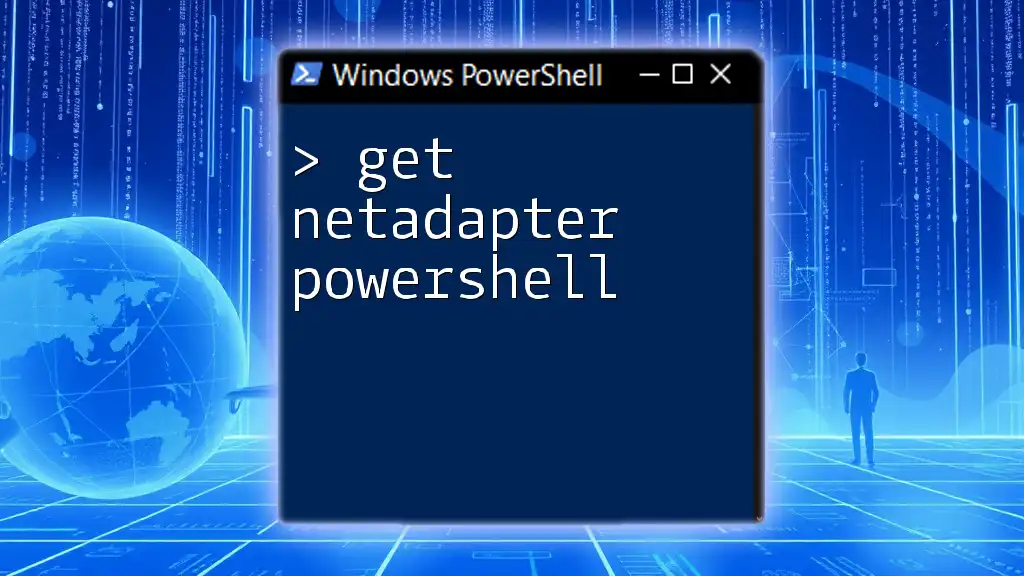
Advanced Techniques
Using PowerShell Remoting
PowerShell remoting is a powerful feature that allows you to execute commands on remote servers. This is useful when managing multiple servers. For instance, you can check installed features on a remote machine using the following command:
Invoke-Command -ComputerName RemoteServerName -ScriptBlock { Get-WindowsFeature }
This command executes `Get-WindowsFeature` on `RemoteServerName`, providing you with the same output as if you were running it locally.
Understanding and Utilizing Modules
PowerShell operates in a modular framework, where various cmdlets are grouped into modules. Some specific modules may enhance your capabilities regarding roles and features, although `Get-WindowsFeature` comes built-in with Windows. Familiarizing yourself with available modules can empower your management tasks further.
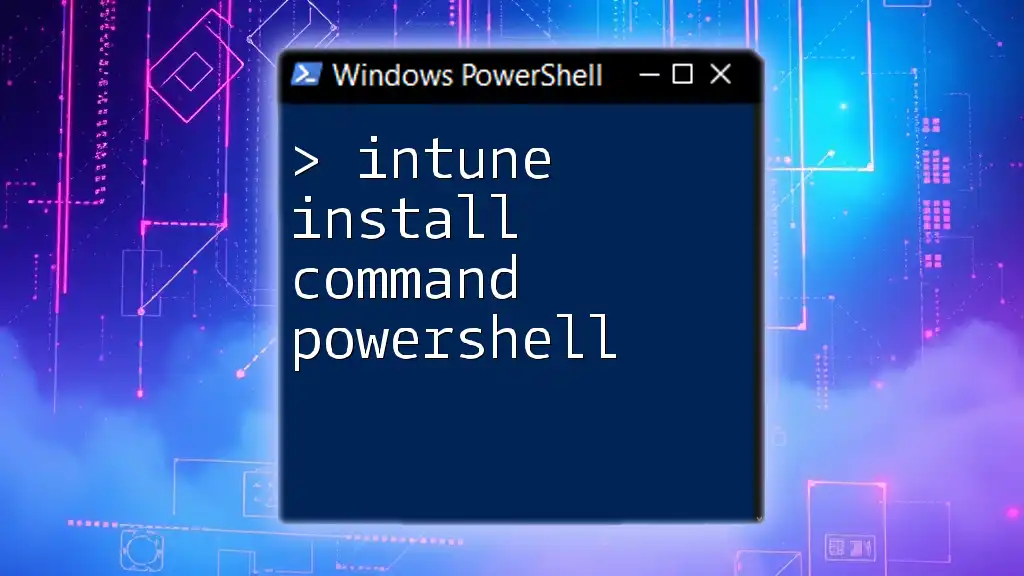
Troubleshooting Common Issues
PowerShell Execution Policies
When running PowerShell commands, you might encounter issues related to execution policies. These policies dictate the conditions under which scripts are run to ensure system security. To view your current execution policy, use:
Get-ExecutionPolicy
If you encounter permission issues, you may need to change the execution policy with:
Set-ExecutionPolicy RemoteSigned
This command allows scripts to be run as long as they are signed by a trusted publisher.
Permissions and Access Rights
Often, access issues arise from insufficient permissions to perform certain tasks. Make sure you are running PowerShell as an Administrator and have adequate permissions to view or modify installed roles and features. If you are part of a domain, make sure your user account has the roles necessary for server management.
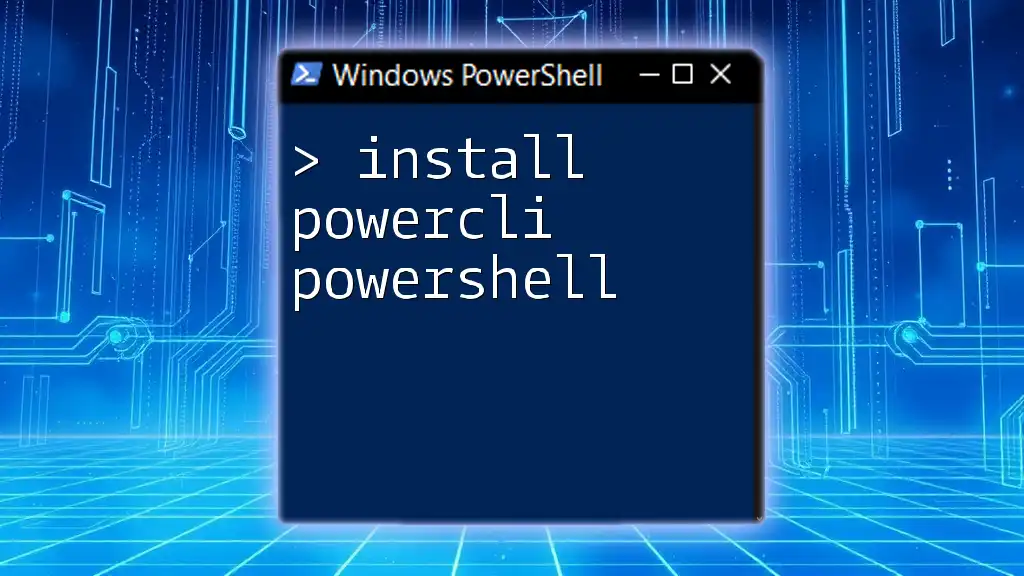
Conclusion
By mastering the use of PowerShell to get installed roles and features, you equip yourself with essential skills for effective server management. The commands presented here open doors to a deeper understanding of server functionalities and ensure you can optimize your server environments confidently.
Regular practice with these commands will solidify your knowledge and prepare you for advanced management tasks. Diving deeper into PowerShell beyond the basics can transform your approach to IT administration, making it more efficient and powerful.
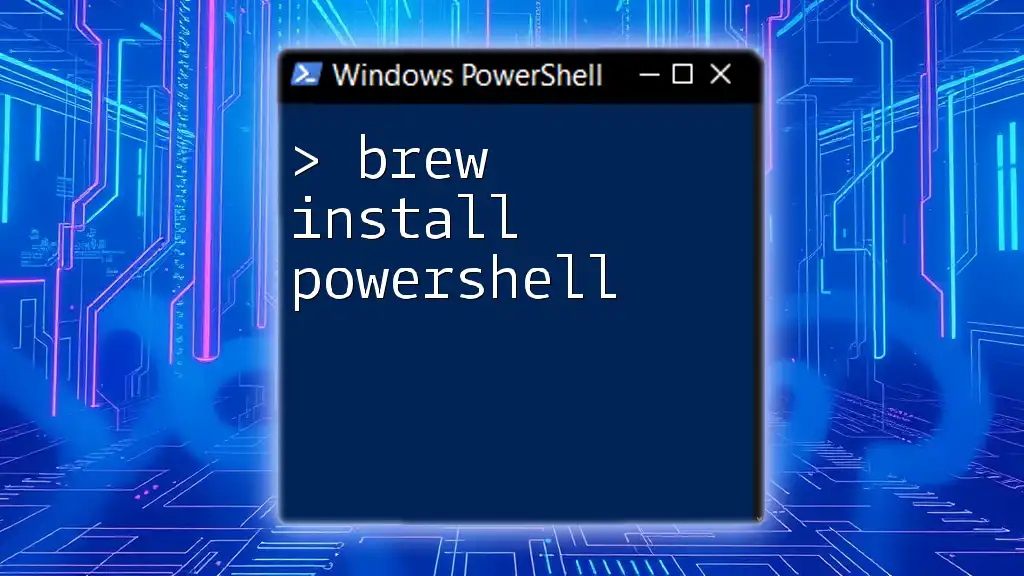
Call to Action
For those eager to enhance their PowerShell skills further, consider joining our PowerShell training courses. Share your experiences or any questions you have in the comments section to foster a learning community.

